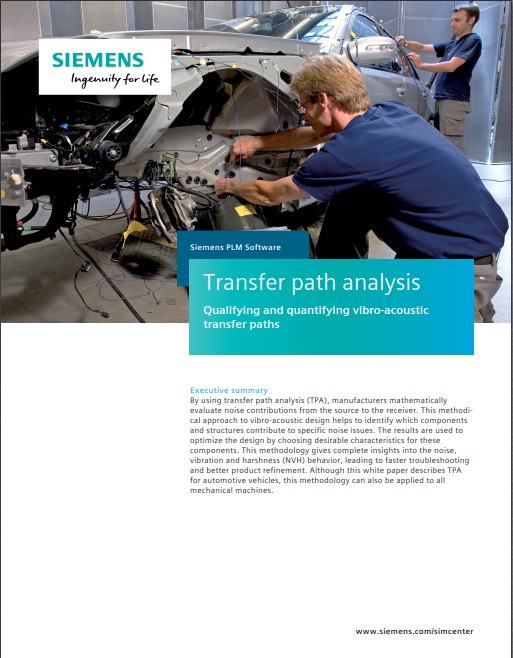Why transfer path analysis is not established technology

280.000.000 results. That’s what you get when typing ‘transfer path analysis’ in Google Search. No wonder. The TPA methodology exists for over 20 years and is widely applied across all industries. How do you make a meaningful selection of these 280 million resources?
At the Simcenter Conference in Prague in 2018, key note speaker Nancy Rademaker said: ‘We did not invent the light bulb by continuously optimizing candles.”

Keynote speaker Nancy Rademaker at the Simcenter Conference in Prague.
This also applies to transfer path analysis. At first, it was a troubleshooting method using test only. Although these traditional test approaches to TPA are still relevant and widely employed, new solutions have been developed to qualifying and quantifying vibro-acoustic transfer paths. Just like the story of the candles and the light bulbs, Siemens PLM Software keeps improving existing technologies on the one hand side, while developing new techniques to identify the root causes of noise issues and optimize the design on the other.
Is transfer path analysis truly established technology?
No, it is not. At Siemens Digital Industries Software, our NVH engineering experts, test and simulation engineers are working together to find new methodologies to perform TPA analyses faster and more accurate. Depending on the structure, single or multi-reference sources or the stage of the development, they have developed new methodologies that are applied next to the traditional troubleshooting TPA techniques. Methodologies are either test-based, simulation-based or a combination of test & simulation-based.
Guideline to qualifying and quantifying vibro-acoustic transfer paths.
Want to know which TPA method is best applied for your NVH issue? Read the free white paper: Transfer path analysis: a guideline to qualifying and quantifying vibro-acoustic transfer paths. It describes the various transfer path analysis methods and their application domains.
The white paper describes the following methodologies: airborne loads estimation, acoustic source quantification, structure-borne loads estimation, multi-reference TPA, energetic power-based ASQ, as well as new approaches such as component-based TPA, using blocked forces, or model-based TPA. These methodical approaches to vibro-acoustic design are applied to benchmarking and target setting, vehicle development and pass-by noise engineering.
I couldn’t have said it better than Nancy. Just like candles and light bulbs emit light, established and new TPA methodologies provides complete insight into NVH behavior. They hereby lead to faster troubleshooting, better product refinement and a more systematic approach to vibro-acoustic design.
Interested in new TPA methods? Apart to the white paper, I kindly invite you to the free on-demand webinar: Better & faster vehicle NVH insights using the latest transfer path analysis methods. With this webinar, Steven Dom, Automotive Solution Manager, explains how new transfer path analysis methods are a game changer in the relationship between OEMs and suppliers.
For more information:



Comments
Comments are closed.